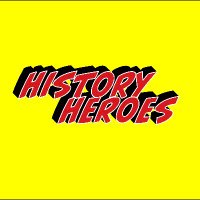
History Heroes
@historyheroes1
Early US History junkies & educational content creators. Daily OTD & Trivia (M-F). Check out our merch at historyheroes.org
ID: 1087014819725799425
http://youtube.com/c/HistoryHeroes 20-01-2019 15:51:43
3,3K Tweet
1,1K Takipçi
863 Takip Edilen













